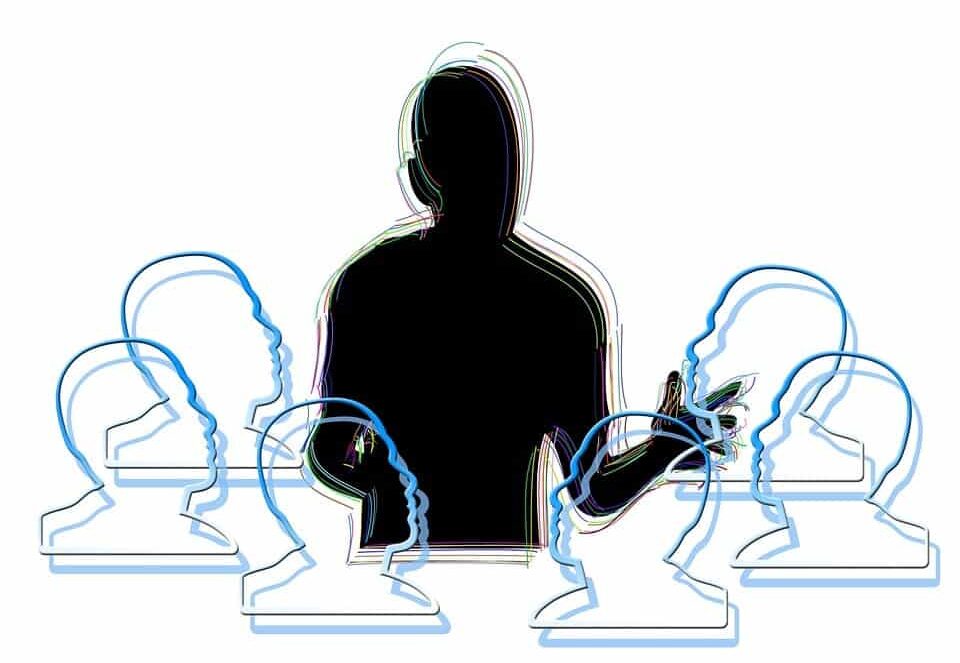When a professional development project ends, what remains behind?
by Jacy Ippolito, Christina L. Dobbs, and Megin Charner-Laird
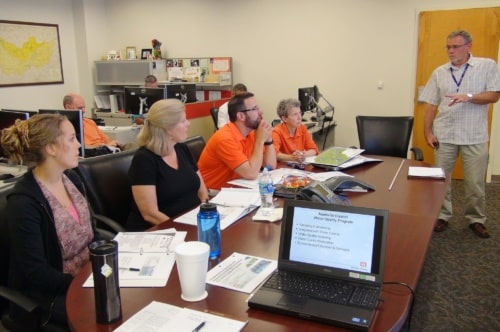 As researchers and university consultants who design and study literacy professional development projects, we are always curious about “what remains” when a particular project comes to an end. What new capacities may have been built as the result of professional learning: new capacities for teachers, for students, or for the school as an organization? What evidence suggests that a particular professional learning initiative for teachers made a difference in classroom practices? In teacher collaborative learning routines? Do we see broader cultural shifts? Or, do we just see “business as usual,” with very little evidence of impact from professional learning (gulp)?
As researchers and university consultants who design and study literacy professional development projects, we are always curious about “what remains” when a particular project comes to an end. What new capacities may have been built as the result of professional learning: new capacities for teachers, for students, or for the school as an organization? What evidence suggests that a particular professional learning initiative for teachers made a difference in classroom practices? In teacher collaborative learning routines? Do we see broader cultural shifts? Or, do we just see “business as usual,” with very little evidence of impact from professional learning (gulp)?
While there is much science and art to measuring the effects of professional learning (see, for instance, the work of Thomas Guskey), many teachers and school leaders are interested in quick and easy ways to answer the question: “Did our professional learning project make a difference in our school?”
Recently, we have been studying professional learning initiatives focused on disciplinary literacy, supporting and observing middle and high school teachers as they apprentice their students into the ways of reading, writing, and communicating like authors, historians, mathematicians, and scientists. We believe this work is essential at this point in U.S. history. As argued by many over the past decade (Carnegie Council on Advancing Adolescent Literacy, 2010; Moje, 2015; Shanahan & Shanahan, 2008; Toth, 2017), a focus on high-level, discipline-specific reading, writing, and communication skills is key to helping students succeed in college and the workplace. Moreover, disciplinary literacy instruction may be key in helping students identify their own interests, passions, talents, and identities – to set goals and then pursue those goals with high-level skills.
Finally, it has been suggested that all of these high-level discipline-specific skills are necessary in helping to create an informed citizenry, with equal career access and opportunities for all students. However, achieving all of these goals is a lot to ask of a specific professional learning project.
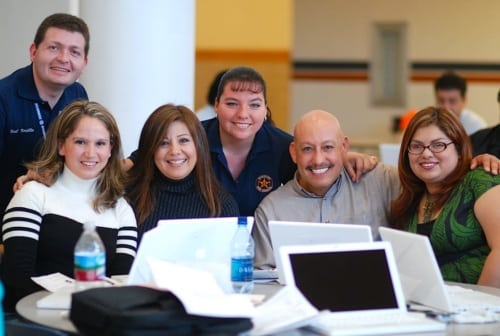 Though some professional learning projects meet many of their goals, they inevitably come to an end – even authentic, long-lived professional learning initiatives such as those described in our recent book: Investigating Disciplinary Literacy: A Framework for Collaborative Professional Learning. In the book, we outline how successful secondary school teams often go through planning, implementation, and expansion/evaluation phases of professional learning work. We suggest a straight forward seven-step process to guide secondary school teachers and leaders through these three phases, with each step supported by research, our own experiences, and snapshots of practice from middle and high school teachers and leaders. Yet, even these robust projects come to a natural close.
Though some professional learning projects meet many of their goals, they inevitably come to an end – even authentic, long-lived professional learning initiatives such as those described in our recent book: Investigating Disciplinary Literacy: A Framework for Collaborative Professional Learning. In the book, we outline how successful secondary school teams often go through planning, implementation, and expansion/evaluation phases of professional learning work. We suggest a straight forward seven-step process to guide secondary school teachers and leaders through these three phases, with each step supported by research, our own experiences, and snapshots of practice from middle and high school teachers and leaders. Yet, even these robust projects come to a natural close.
As Joe McDonald and the Cities and Schools Research Group write in their excellent book American School Reform: What Works, What Fails, and Why, “action spaces,” or the intersection of money, civic capacity, and professional capacity, can allow for a great deal of professional learning and school reform to occur in a short period of time. And yet all action spaces are destined to “collapse” when available resources or civic goodwill come to an end. Whereas many educators view the end of professional learning initiatives through the lens of failure and what was not accomplished, McDonald disagrees, suggesting that “This [collapse] is inevitable . . . but not disastrous because of the connections left behind” (p. 24). Those remaining “connections,” after a professional development project has ended are of utmost interest to us.
We owe a debt to researchers such as Joe McDonald (and Tom Guskey and Tony Bryk, among others) who have written extensively about the fruits of professional learning and how to make sense of the results. But until recently, we had not considered one relatively easy and powerful way of making sense of “what remains” after a professional learning action space closes.
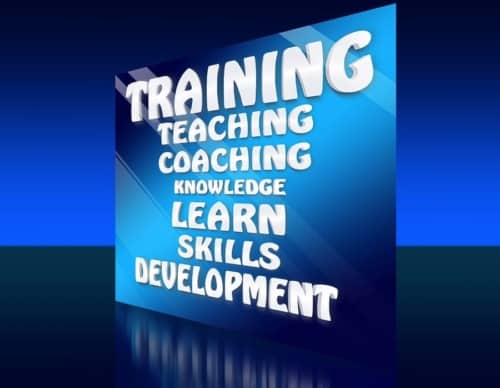 We might learn a great deal by simply asking teachers new to the school, department, or role to describe the school and departmental culture, as well as its instructional environment. A relative newcomer, a teacher who arrived after the conclusion of a particular professional learning project, might describe the current instructional environment and degree of teacher collegiality in such a way that we could easily compare that description to earlier accounts given by veteran teachers in the school. This simple method might provide an interesting window into “what remains” as the result of previous professional learning. Comparing a new teacher’s description of teaching, learning, and adult collaboration to what a veteran described as past school practices and culture can tell a school leader a great deal about the “connections left behind” after professional learning ends.
We might learn a great deal by simply asking teachers new to the school, department, or role to describe the school and departmental culture, as well as its instructional environment. A relative newcomer, a teacher who arrived after the conclusion of a particular professional learning project, might describe the current instructional environment and degree of teacher collegiality in such a way that we could easily compare that description to earlier accounts given by veteran teachers in the school. This simple method might provide an interesting window into “what remains” as the result of previous professional learning. Comparing a new teacher’s description of teaching, learning, and adult collaboration to what a veteran described as past school practices and culture can tell a school leader a great deal about the “connections left behind” after professional learning ends.
We recently stumbled upon this method during a one-day professional learning experience in Brookline Public Schools in MA. We had previously engaged in a four-year disciplinary literacy initiative in Brookline (the “Content-area Reading Initiative” or CRI). When that project first began (in 2011 and 2012), high school teachers described working in isolation, and without a collective sense of how to bolster students’ disciplinary literacy skills. Flash forward to the summer of 2017, when we met a second-year teacher (Evan Mousseau) who described his department and school’s instructional environment with fresh eyes. We were admittedly a bit surprised to hear how different the environment was from when we first stepped foot in the district.
Evan said “I don’t know what the English Department at Brookline High School was like before, or even while my colleagues were doing CRI work; I wasn’t there yet. But I do know that I joined a department that was deeply collaborative and eager to share ideas, best practices, and classroom struggles. Many of those collaborations included colleagues making reference to their CRI work. These references were casual and made with assumed familiarity, making it clear that the work had become folded into the vocabulary of our department and the school at large. Even before I knew what it was, it was clear to me that CRI had a long-term influence on the department I was joining.”
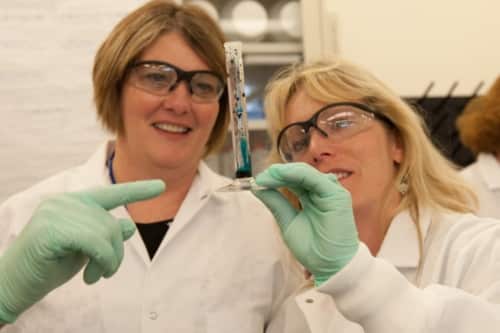 While we collected a great deal of data on the effects of the project from its participants during and immediately after its conclusion, we were heartened by this young teacher’s anecdotes of the teaching and learning environment several years later. It encourages us (and school leaders) to keep collecting data long after a professional learning initiative ends, to better understand how the ripple effects of that professional learning continue to shape teaching and learning. “What remains” after the consultants have left the building can guide teachers and leaders toward their next professional learning project. Newly built professional capacities, even if seemingly dormant for a while, can spur the next action space and become the basis for new professional learning.
While we collected a great deal of data on the effects of the project from its participants during and immediately after its conclusion, we were heartened by this young teacher’s anecdotes of the teaching and learning environment several years later. It encourages us (and school leaders) to keep collecting data long after a professional learning initiative ends, to better understand how the ripple effects of that professional learning continue to shape teaching and learning. “What remains” after the consultants have left the building can guide teachers and leaders toward their next professional learning project. Newly built professional capacities, even if seemingly dormant for a while, can spur the next action space and become the basis for new professional learning.
Author
 Jacy Ippolito is an associate professor and department chair in the School of Education at Salem State University. Jacy’s research, teaching, and consulting focus is on the intersection of adolescent and disciplinary literacy, literacy coaching, teacher leadership, and school reform. Jacy is especially interested in the roles that teacher leaders, principals, and literacy coaches play in helping institute and maintain instructional change at middle and high school levels.
Jacy Ippolito is an associate professor and department chair in the School of Education at Salem State University. Jacy’s research, teaching, and consulting focus is on the intersection of adolescent and disciplinary literacy, literacy coaching, teacher leadership, and school reform. Jacy is especially interested in the roles that teacher leaders, principals, and literacy coaches play in helping institute and maintain instructional change at middle and high school levels.
The results of Jacy’s research and consulting work can be found in a number of journals and books, including the Journal of Adolescent & Adult Literacy, Professional Development in Education, the Journal of School Leadership, The Learning Professional, the Journal of Staff Development, and The Elementary School Journal. His recent books include Investigating Disciplinary Literacy (2017), Cultivating Coaching Mindsets (2016), Adolescent Literacy in the Era of the Common Core (2013), and Adolescent Literacy (2012). For more information about Jacy’s work, visit: https://www.visualcv.com/jacyippolito
 Christina L. Dobbs is an assistant professor in Boston University’s School of Education where she teaches courses on English education, writing instruction, and English language learners. Her research focuses on the written academic language of secondary students and the disciplinary literacy training and professional development of teachers. Her research can be found in a variety of journals including the Journal of Adolescent & Adult Literacy, Reading Research Quarterly, Reading & Writing, and Professional Development in Education.
Christina L. Dobbs is an assistant professor in Boston University’s School of Education where she teaches courses on English education, writing instruction, and English language learners. Her research focuses on the written academic language of secondary students and the disciplinary literacy training and professional development of teachers. Her research can be found in a variety of journals including the Journal of Adolescent & Adult Literacy, Reading Research Quarterly, Reading & Writing, and Professional Development in Education.
 Megin Charner-Laird is an associate professor at Salem State University’s School of Education. She teaches courses on assessment, qualitative research, and elementary education. A former teacher, her focus is on teachers’ school-based professional learning experiences, teacher leadership, and teachers’ on-the-ground experiences of policy reforms. Megin can be found in a variety of journals including the American Journal of Education, Teachers College Record, The Journal of School Leadership, The Learning Professional, and Professional Development in Education.
Megin Charner-Laird is an associate professor at Salem State University’s School of Education. She teaches courses on assessment, qualitative research, and elementary education. A former teacher, her focus is on teachers’ school-based professional learning experiences, teacher leadership, and teachers’ on-the-ground experiences of policy reforms. Megin can be found in a variety of journals including the American Journal of Education, Teachers College Record, The Journal of School Leadership, The Learning Professional, and Professional Development in Education.
Further Reading
- Charleston Business Journal – Grants fund Citadel research into STEM teacher development
- The Huffington Post – The Global Search for Education: Will Singapore Continue to Lead in 2030?
- Education Week – How Teacher Professional Development Changed My Teaching (and a Student’s Life)
